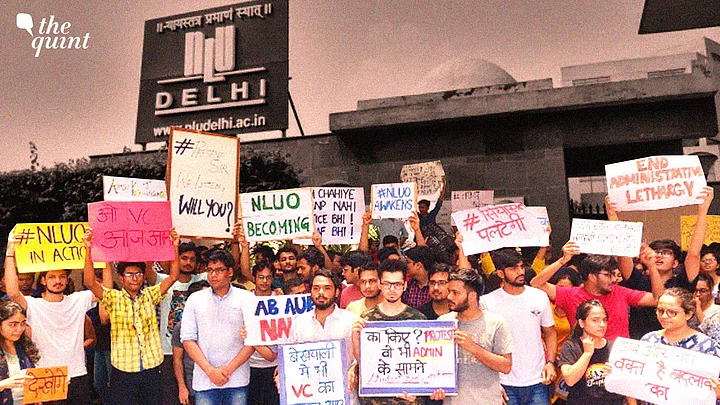The recent fee hike at the premier institution of legal education National Law University, Delhi from ₹1,63,000 to ₹3,65,000 is a manifestation of a larger policy issue. In India, at least since the mid-1930s, policymakers in the legal education sector have been prioritising the issue of poor quality of legal education. Whereas, the issue of access to legal education has—except during the 1960s and 1970s when assembly-line law schools sprang up—been on the back burner.
Today, when National Law Universities (‘NLU’) stand tall with a formidable reputation for their quality education, the exclusion of deprived groups is visible even more starkly with increasing fee amounts. Exclusion takes place on the basis of financial status among other grounds such as disability, caste, religion, etc. Importantly, it takes place both at the pre-admission and post-admission stage.
Exclusion During Admission Process Acts As Biggest Demotivator
Pre-admission stage refers to the transitional phase in the educational process during which students step up from intermediate education to higher education that law schools offer.
When fee structures of the NLUs are a barrier, students get preempted by them. They either give up on even applying for the entrance test, or, if they do clear the test, they fail to finally procure admission due to financial constraints or discouraging scholarship avenues.
The Diversity Studies conducted at the Jamia Millia Islamia’s Faculty of Law and the top law school National Law School of India (‘NLSIU’) University, demonstrates that students from middle or low-income families attend traditional law schools such as Jamia (and other central and state universities) which charge about ₹10,000 per annum (excluding hostel charges).
Such law schools remain more accessible to students from weaker financial backgrounds in comparison to the NLUs where students pay about ₹2,00,000 to ₹3,00,000 per annum.
The numbers are remarkable at Jamia where half of the entire student body at 49.9% had a family income of less than ₹50,000 per month. Such students at the NLSIU were less than even half of that at 18.9%. Students with a high family income of more than ₹3,00,000 per month were a mere 2.54% at Jamia. But, almost six times more at NLSIU at 14.86%. Those with an income of more than ₹1,00,000 per month were 21% at Jamia and NLSIU 53.09%. Students with annual family income of less than ₹25,000 per month were 6.55% and 4.5 times more at the NLSIU at 29.9%.
Fee Hikes and Protests in Other Law Schools
Such a pattern in the financial background has been documented across the NLUs. Yet, student protests against the hikes are not uncommon. In the middle of this year at Dharmashastra National Law University, Madhya Pradesh, students protested against the fee that was charged for remedial classes that were taken by those appearing for re-examination.
In 2019 at the NLSIU, students staged protests against the ₹50,000 yearly fee-hike that was imposed. During the same year students at Himachal Pradesh National Law University protested against, among other things, the exorbitant fee of ₹2.5 lakhs that the law school charged.
But if students from high-family-income groups are studying at the NLUs, why do they protest?
The protests signal that many students at the NLUs face post-admission exclusion, ie, after they take admission, they remain excluded from everyday life at the campus. Usually, such exclusion takes place when students find the campus environment is not accepting of their identity: their gender, caste, religion, sexual orientation, disability status, or even financial status.
Exclusion on the basis of financial status happens also when a student can somehow manage to just pay the exorbitant fee—but they do so with a very low return on investment. For example, on one hand, some may be paying the fee either through student loans or through their parents' years of savings (ie, investment) for a law degree (ie, return).
On the other hand, in traditional law schools investment is 30 times lesser (ie, fee) for the same return (ie, a law degree). The return on investment in the latter is sigfinicantly higher.
Note for Policymakers
Firstly, policymakers need to modernise the pedagogy at traditional law schools; Secondly, facilitate better coordination among the Bar Council of India, law schools and relevant government departments. Otherwise, high-quality legal education is only coming at the price of further excluding the excluded. Such legal education offers too low a return-on-invest— for the entire nation.
(Husain is a Research Fellow at Vidhi Centre for Legal Policy and the founding Coordinator of Vidhi Access to Legal Education Fellowship. He authored Inclusivity and Diversity at Minority Central University Report. This is an opinion piece. The views expressed above are the author’s own. The Quint neither endorses nor is responsible for the same.)
(At The Quint, we question everything. Play an active role in shaping our journalism by becoming a member today.)
